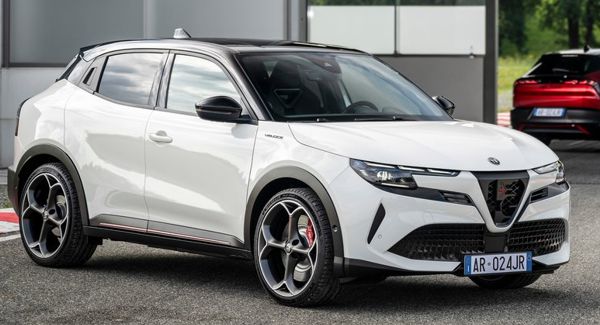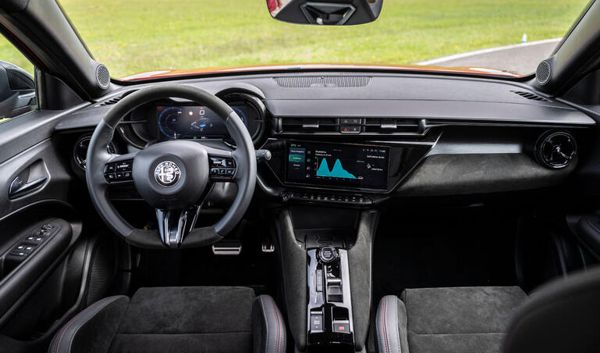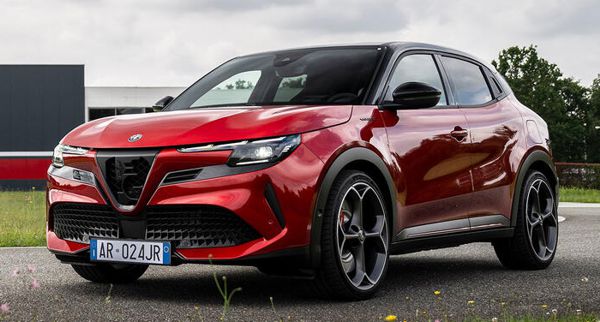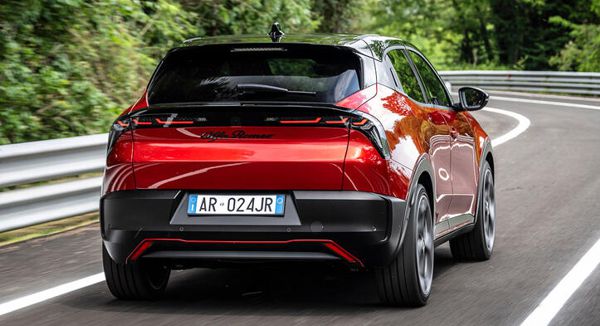Published
on 8
Aug 2024
|
All rights reserved.
|
|

|
|
Junior
look, giant step.
|
|
Interestingly, this car
was originally named Milano after the north Italian city, but it is
actually built in Tychy, Poland. Just days after its official
announcement, it was backfired by Italian politicians who claimed the
Milano nameplate violating local laws that prohibit foreign products
from using Italian-sounding names. Rather than getting into prolonged
legal battles and PR crisis, Alfa Romeo boss Jean-Philippe Imparato
decided to change its name to Junior and reworked all the marketing
materials immediately, so hurry that you won’t find the new name on its
badge. However, in my opinion Junior is definitely a better name than
Milano, because the former was used in the 1960s and 70s on the smaller
engine versions of Giulia GT, while the latter was used on only the
US-version of Alfa 75 in the 1980s. It goes without saying which one
was more loved by the fans of Alfa.
The Junior is currently the smallest Alfa Romeo, and should remain so
in the foreseeable future. It is slightly larger than MiTo and smaller
than Giulietta, but in terms of price and market positioning it could
be closer to the latter. The car is built in Fiat’s Polish plant
together with sister cars Fiat 600 and Jeep Avenger. However, as you
will see, it is a much better car than both.
Most people love its styling, which is unmistakably Alfa. The new matt
black shield grille without any chromed elements take some getting used
to, but otherwise the car looks dynamic and quite tasteful. For sure it
is designed like a crossover, thanks to that high waistline and large
wheel arches with scratch-proof rubber extensions. Wheel size can be up
to 20-inch, which is very large for such a small car. The large
footwork contributes to a strong sense of sportiness and rock-solid
stability.

|
|
Build
quality and materials are superb. Infotainment system has none of the
flaws you used to experience on Alfa products.
|
|
While the car looks like a crossover, in essence it is closer to
conventional hatchbacks. This is because: 1) It is not very tall at
just over 1.5 meters. The lowest version, Veloce, is merely 40mm taller
than the old Giulietta. 2) All versions are front-wheel drive, while
most are full electric-powered, so they are lighter and more efficient
than the usual crossovers. 3) It is really fun to drive, even better
than most hatchbacks, something cannot be said to any compact
crossovers.
Inside, you’ll be surprised to find out the driver seat is mounted low
and the sitting position is superb for keen drivers. The Sabelt bucket
seats on range-topping Veloce hug you well in corner yet comfortable in
long distance cruising. The build quality and materials are superb,
too, at least on more expensive models. The digital instrument is still
housed in good-looking binnacle as in traditional Alfas, thankfully.
The infotainment system shows crisped graphics on the 10.25-inch
touchscreen, responds to input quickly and the menus is arranged
logically, having none of the flaws you used to experience on Alfa
products. There’s also a row of physical buttons for controlling HVAC
easily on the move. Well, the back seat is cramped for taller adults,
just like any of its Stellantis siblings, but on the flipside the boot
is large at 400 liters. First impression is very good indeed.
To drive, it is even better. The Junior is built on Stellantis e-CMP2
platform like the aforementioned siblings as well as countless of
Peugeot, Citroen, DS, Lancia and Opel. It uses the same 1.2-liter
3-cylinder
hybrid power or 54kWh lithium battery. The petrol engine produces 136
hp and assisted with a 29 hp electric motor at lower revs – the latter
is built into the smooth-shifting 6-speed DCT gearbox. 0-60 mph takes 8
and a half seconds. Meanwhile, the standard electric model offers 156
hp like other Stellantis siblings and does 0-60 in about the same time
as the hybrid model. All electric models employ a single motor and
drive the front wheels only. Suspension is by struts up front and a
simple torsion beam at the rear, while dampers are passive. In short,
nothing breaking the mold.
 |
|
Veloce
is quick and fun to drive.
|
|
However, the same engineering team that created the might Giulia
Quadrifoglio is responsible for its making, and it did wonder to
transform the car with some small details. When you drive the
range-topping Veloce model, you will immediately impressed by how well
its various controls are tuned: the steering – geared for a quick 2.6
turns from lock to lock – feels light and responsive, precise and even
talkative, just like the Giulia QF. The stiffened suspension – dropped
by 25mm on Veloce – is not overly stiff, delivering a supple ride and
confidence-inspiring control simultaneously. The car exhibits a bit
more body roll in corner than German cars, but does that progressively
and adds to your sense of engagement, again just like the Giulia QF.
The brakes, normally the weakness of electric cars, are flawless here,
because in Dynamic mode it disables regenerative braking entirely,
resulting in a firm and linear pedal. Moreover, the Veloce’ 380mm front
brakes kill speed effortlessly.
The Veloce is really the highlight of the Junior range. Alfa fits it
with a 280 hp motor – the most powerful ever introduced to eCMP cars –
and mates it with a class-first Torsen limited slip differential. While
0-60 mph of 5.6 seconds is no headlines for an EV, it is still plenty
of fun to have. The synthesized noise mimicking Alfasud’s 4-cylinder
boxer engine is actually quite good to listen.
Power is put down to the road cleanly through the LSD. There is just a
hint of torque steer when you open up throttle suddenly, but nothing
worrying, because the diff kills wheel spin quickly and the bespoke
Michelin Pilot Sport EV tires offer remarkable grip. You can chuck the
Junior into corners aggressively and rest assure that its chassis can
cope with. More crucially, the Junior is not just about grip or
unflappable handling. It is more about engagement. Push it into corner
and lift off throttle, you can feel the chassis rotates a few degrees
before traction control intervenes and keep you safe. It has that kind
of interaction that makes the Junior as fun to drive as some of the
best conventional hot hatches.

|
|
Supple
ride matched with great handling, thanks in part to lightweight.
|
|
In the world of small EVs, nothing ever comes close to the driving fun
achieved by this baby Alfa. Apart from the wonderful job done by the
Giulia QF team, it is also down to the lightness of the car. The Veloce
weighs just 1590 kg, some 175 kg lighter than its closest rival,
single-motor version of Volvo EX30. Even Mini Cooper SE, considerably
smaller and less powerful than the Alfa, is rated at 1605 kg. It shows
that Alfa Romeo is not only good at weight control but its decision to
keep using torsion-beam rear axle pays off.
If the Junior Veloce is an ICE car, it might have been gifted 5-star
rating. However, since it is an electric car, we have to consider
practicalities like range and charging speed. The 54kWh battery gives a
range of only 208 miles (334 km) on WLTP combined cycles, or about 170
miles in the real world, which is not great. Drive as enthusiastically
as it tempts you, the range will dip even further. The lesser 156 hp
model on
smaller wheels is a lot more practical at 255 miles (410 km)
officially, but 100kW charge speed is a bit unremarkable these days.
For those cannot live with short range and slow charging, the 1.2-liter
hybrid model would serve them best, especially as it is a lot cheaper.
The Junior Veloce’s asking price of £42K can nearly buy you a
Volkswagen Golf R and not far below Honda Civic Type R, which are
dynamically on another level. The lesser electric model costs a more
reasonable £34K but it is neither as exciting nor as well
equipped. The hybrid is a quarter cheaper again,
so it could be a sensible choice.
|
Verdict:     |
|